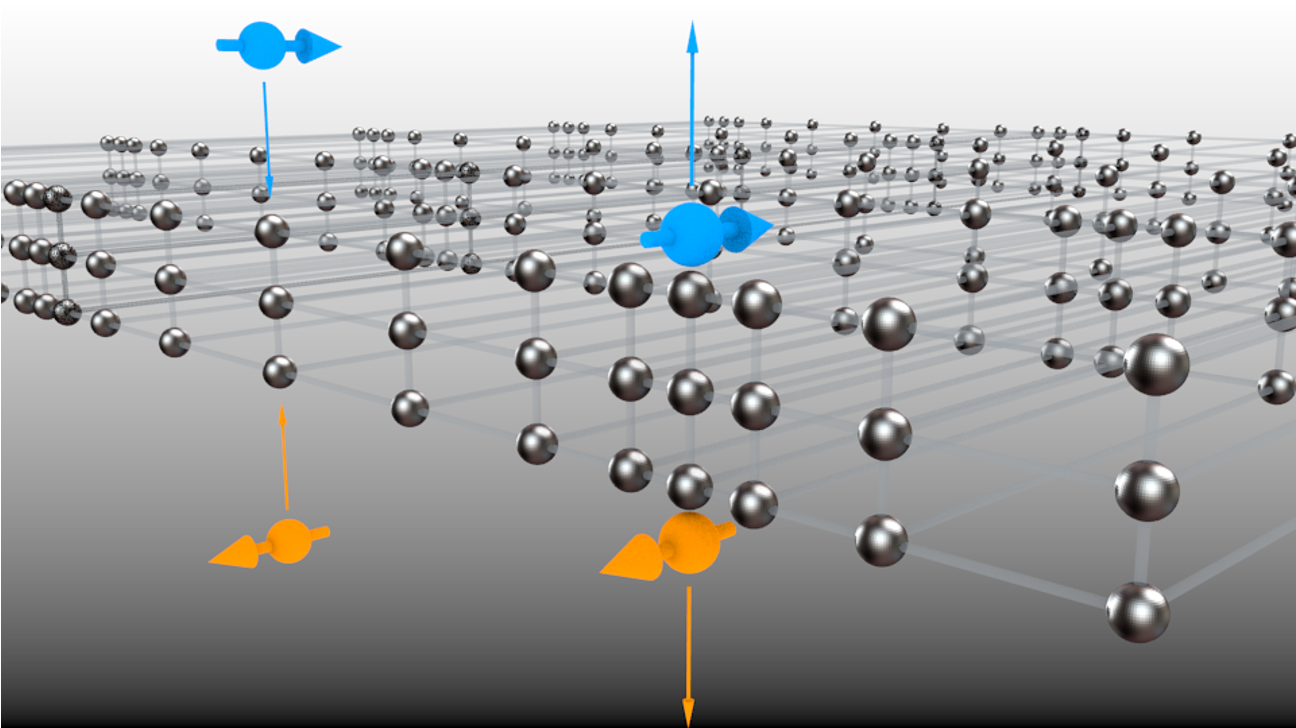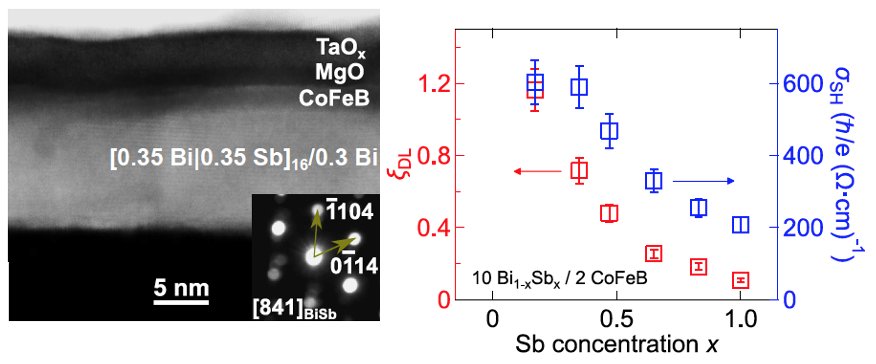Spin magnetic moment current in Dirac materials
The spin transport properties of Dirac Hamiltonian systems is studied using Bismuth as a model case. We find the spin Hall conductivity takes a maximum near the Dirac point and decreases with increasing carrier density. The sign of the spin torque conductivity is the same regardless of the position of the Fermi level. These features can be accounted for quantitatively using a Dirac Hamiltonian model if spin current is defined as a flow of spin magnetic moment. The results demonstrate that the giant spin magnetic moment, with an effective g factor that approaches 100, is responsible for the spin Hall effect in Bi.

Spin Hall effect driven by the spin magnetic moment current in Dirac materials
Z. Chi, G. Qu, Y.-C. Lau, M. Kawaguchi, J. Fujimoto, K. Takanashi, M. Ogata, M. Hayashi
Phys. Rev. B 105, 214419 (2022).
Observation of the acoustic spin Hall effect in strong spin-orbit metals
Under excitation of surface acoustic wave (SAW), we find a spin current flows orthogonal to the SAW propagation in nonmagnetic metals. The spin current scales with the spin orbit interaction (SOI) and the time derivative of the lattice displacement. These results, which imply the strong coupling of electron spins with rotating lattices via the SOI, show the potential of lattice dynamics to supply spin current in strong spin-orbit metals.

Acoustic spin Hall effect in strong spin-orbit metals
T. Kawada, M. Kawaguchi, T. Funato, H. Kohno, M. Hayashi
Science Advances 7, eabd9697 (2021).
[Press release]
Giant spin orbit torque found in systems with Dirac electrons
Dirac-like electrons in BiSb semimetallic alloys are found to be extremely effective in generating spin current. The film structure, composition, layer thickness and temperature dependences of the spin Hall conductivity show that it is the bulk of the alloy that predominantly contributes to the generation of spin current; the topological surface states, if present in the films, play little role. The thermally-excited Dirac-like electrons in the L-valley of the semimetal possess an extremely large spin current mobility, leading to a spin Hall angle that exceeds 1.

The spin Hall effect of Bi-Sb alloys driven by thermally excited Dirac-like electrons
Z. Chi, Y.-C. Lau, X. Xu, T. Ohkubo, K. Hono, M. Hayashi
Science Advances, 6, eaay2324 (2020).



